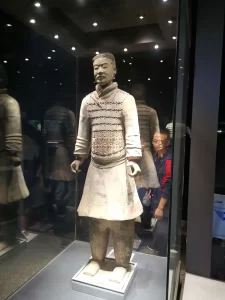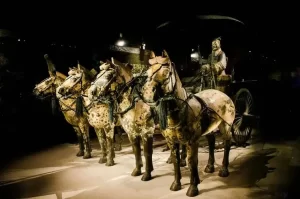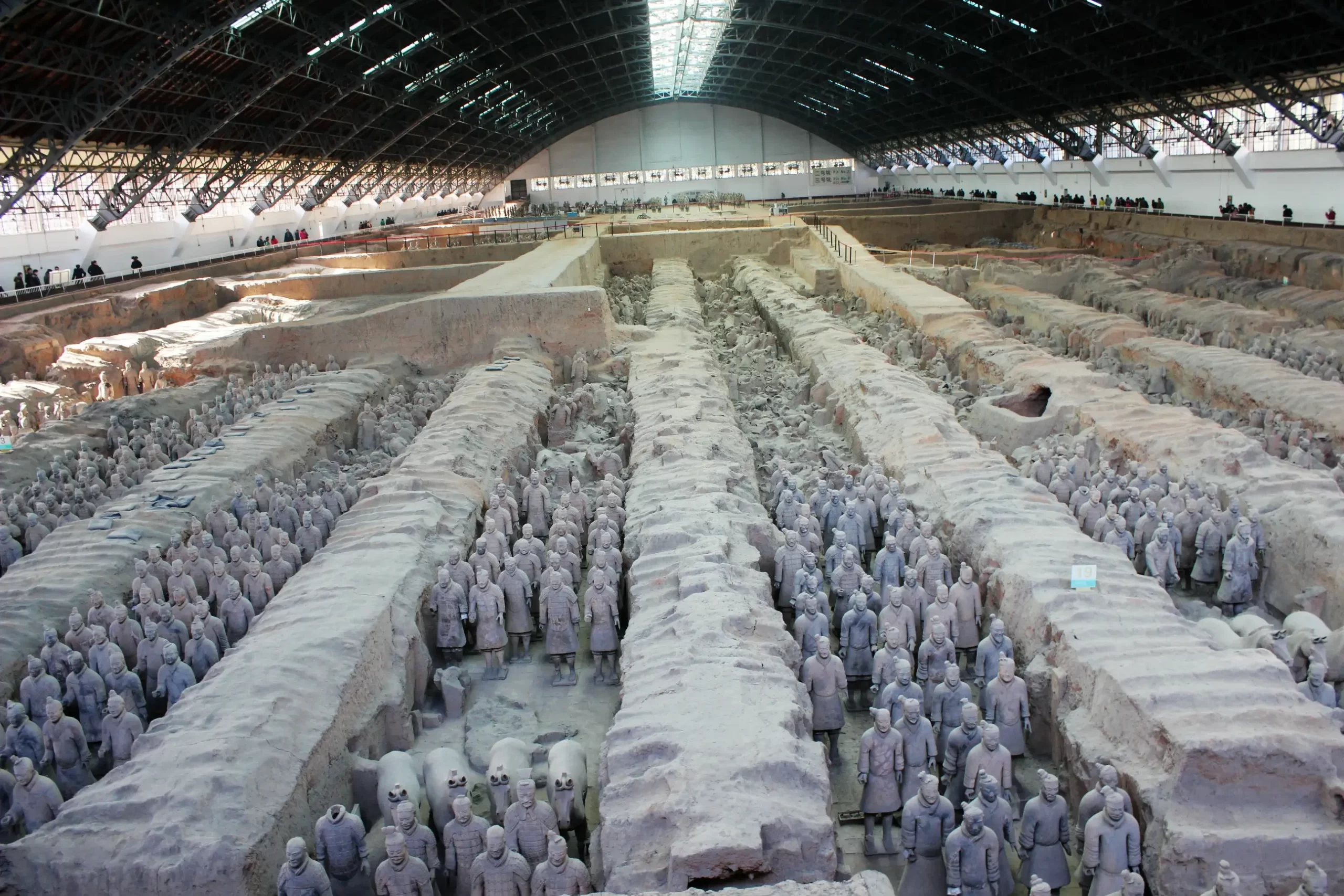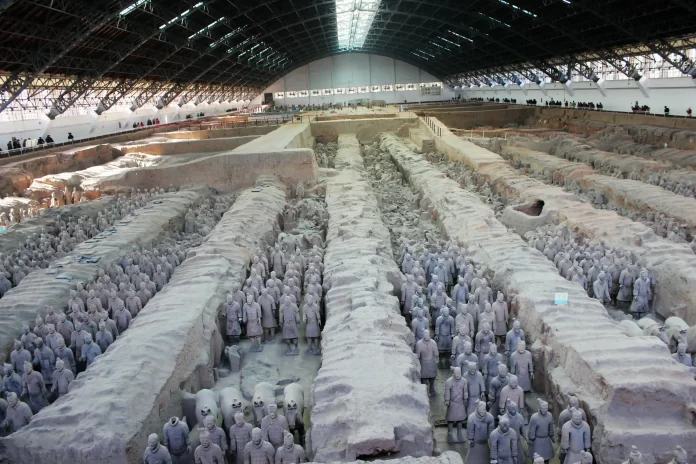 The Terracotta Army, also known as the Terracotta Warriors and Horses, is a collection of life-sized terracotta sculptures of soldiers, horses, and chariots that were buried with the first emperor of China, Qin Shi Huang, to protect him in the afterlife. The Terracotta Army is considered one of the greatest archaeological discoveries of the 20th century and is a UNESCO World Heritage Site.
The Terracotta Army, also known as the Terracotta Warriors and Horses, is a collection of life-sized terracotta sculptures of soldiers, horses, and chariots that were buried with the first emperor of China, Qin Shi Huang, to protect him in the afterlife. The Terracotta Army is considered one of the greatest archaeological discoveries of the 20th century and is a UNESCO World Heritage Site.
History of the Terracotta Army
The Terracotta Army was created over 2,000 years ago during the Qin Dynasty (221-206 BCE). It was built by Emperor Qin Shi Huang, who was the first emperor to unify China and create a centralized state. The emperor believed that the Terracotta Army would help him rule the empire in the afterlife, just as he had in life.
The construction of the Terracotta Army began in 210 BCE, soon after Emperor Qin Shi Huang ascended to the throne. It took over 720,000 workers and craftsmen more than 10 years to complete the army. The Terracotta Army was buried with the emperor in a massive mausoleum complex in Xi’an, Shaanxi Province, China.
Discovery of the Terracotta Army
The Terracotta Army was discovered in 1974 by a group of farmers who were digging a well in Xi’an. The farmers stumbled upon a large number of terracotta statues, which they initially thought were ancient Buddhist statues. However, upon further inspection, they realized that the statues were actually soldiers and horses.
Excavation of the Terracotta Army
The excavation of the Terracotta Army began in 1975, and it took over 10 years to uncover the entire army. The excavation process was slow and painstaking, as the statues were fragile and had to be carefully removed from the soil.
The Terracotta Army is divided into three main sections: the Infantry Army, the Cavalry Army, and the Chariot Army. The Infantry Army consists of over 6,000 soldiers, each with a unique facial expression and clothing. The Cavalry Army consists of over 1,000 horses and riders, while the Chariot Army consists of over 100 chariots and horses.
 Features of the Terracotta Army
Features of the Terracotta Army
The Terracotta Army is known for its life-sized statues, which are between 1.8 and 2.2 meters tall. Each statue is made of terracotta, a type of clay, and weighs around 100 kilograms. The statues are intricately detailed, with each soldier having a unique facial expression, clothing, and weapons.
The Terracotta Army is also known for its impressive military formation. The soldiers are arranged in a formation that resembles a real army, with soldiers standing in ranks and files. The formation is designed to protect the emperor’s tomb from evil spirits and invaders.
Significance of the Terracotta Army
The Terracotta Army is significant for several reasons. Firstly, it is a testament to the advanced craftsmanship and engineering skills of ancient Chinese civilization. The Terracotta Army is a remarkable achievement, given the technology and resources available at the time.
Secondly, the Terracotta Army provides valuable insights into ancient Chinese history and culture. The statues are based on real soldiers and weapons, which provides a glimpse into the military tactics and strategies of the time.
Thirdly, the Terracotta Army is a symbol of China’s rich cultural heritage and is considered one of the greatest archaeological discoveries of the 20th century. It has been designated as a UNESCO World Heritage Site since 1987 and attracts millions of visitors each year.
 The Terracotta Army is a remarkable archaeological discovery that provides valuable insights into ancient Chinese history and culture. The life-sized statues of soldiers, horses, and chariots are a testament to the advanced craftsmanship and engineering skills of ancient Chinese civilization. The Terracotta Army is a must-visit destination for anyone interested in Chinese history and culture, and it continues to fascinate visitors from around the world.
The Terracotta Army is a remarkable archaeological discovery that provides valuable insights into ancient Chinese history and culture. The life-sized statues of soldiers, horses, and chariots are a testament to the advanced craftsmanship and engineering skills of ancient Chinese civilization. The Terracotta Army is a must-visit destination for anyone interested in Chinese history and culture, and it continues to fascinate visitors from around the world.










